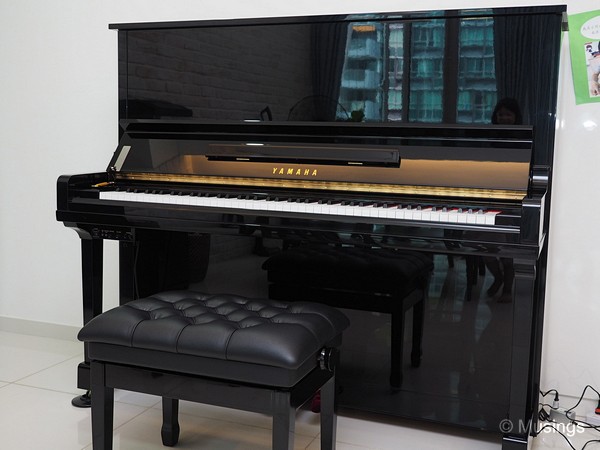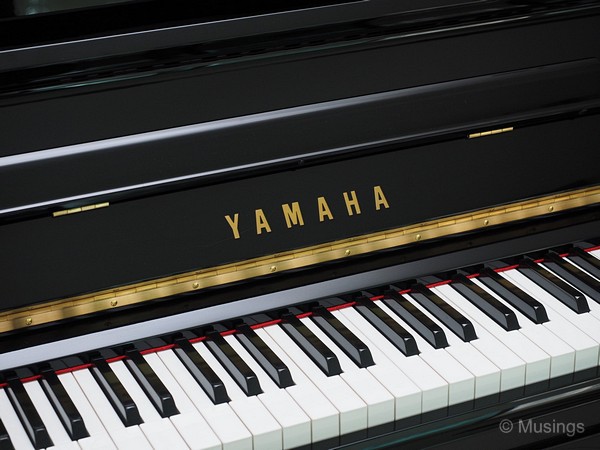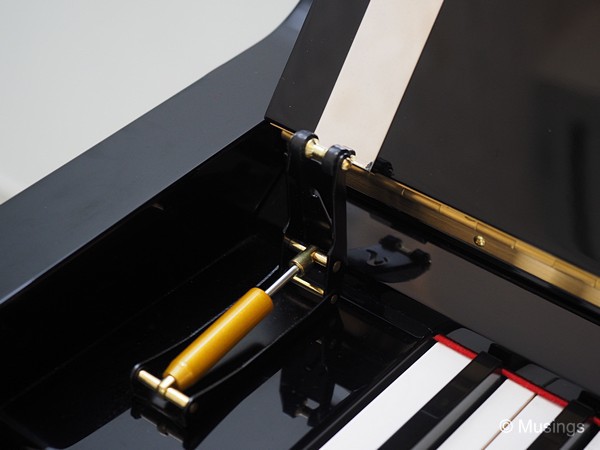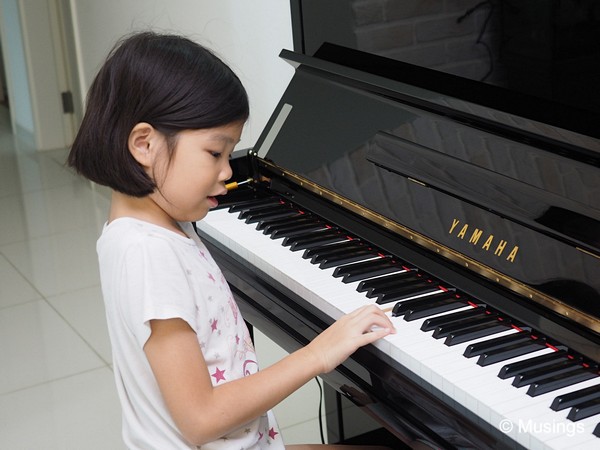I don’t have the faintest recollection of the purchase or delivery of our first family piano, 38 years ago from 1978. My mom did write in her diary though that the piano cost $3,950 – not $4,200 as blogged earlier – and purchased from Singapore Piano Co., and my first piano teacher, Mrs. Teo, even accompanied us to select the piano at the store.
Our Yamaha U30BL arrived on Saturday afternoon. It was originally scheduled for a mid-morning delivery, but the delivery vehicle’s breakdown led to a couple of hours wait – which thankfully was the only hiccup. The piano works great, and our notes and observations after two days and about a dozen hours on it:
The piano – even at 26 years old – looks exactly like new on the outside, and the interior shows a well-cleaned and maintained unit too apart from some minor stains on the manufacturer steel plate attached near the sound board.
Over the years I took my ABRSM exams, I remembered always being a little unsettled at how different the exam pianos sounded compared to what I practiced on. Neither my teachers’ nor our family pianos were Yamahas, and they produced somewhat brighter tones. Our new Yamaha, likely because of the size of its sound board, produces fairly warm tones and similar to what to the Yamaha piano exam rooms. This would be a pretty important aspect of exam preparation for Hannah if she, at any later point, prepares for her ABRSM exams.
The SG2 Silent Piano works as advertised and is simple to operate. Power on, connect one or two headphones to the audio jacks, set the reverb and volume knobs to preference, and play away.
Playing with the Silent Piano mode on feels very different to playing with it off. Specifically, the latter requires a lot more delicate and careful playing, and a lot of concentration is required to hit the note with exactly the right amount of pressure to achieve the desired tone weight and volume. Playing on the Silent Piano mode on the other hand is a lot more forgiving, as the dynamic range seems slightly less wide.
One trait of silent pianos though: there’s no soft-mute any more. It’s normal non-dampened acoustics or on silent mode all the way.
The soft-fall hinge works as stated, and possibly maybe even too well. It takes almost 10-15 seconds for the fallboard to fully close with the hinge.
The store’s custom-designed bench is very comfortable with great support for one’s bum. Unfortunately, the bench doesn’t come with a storage facility, so we had to find space in the living room to keep the piano’s maintenance accessories.




Next post on music, metronomes, and songsheets!
Recent comments